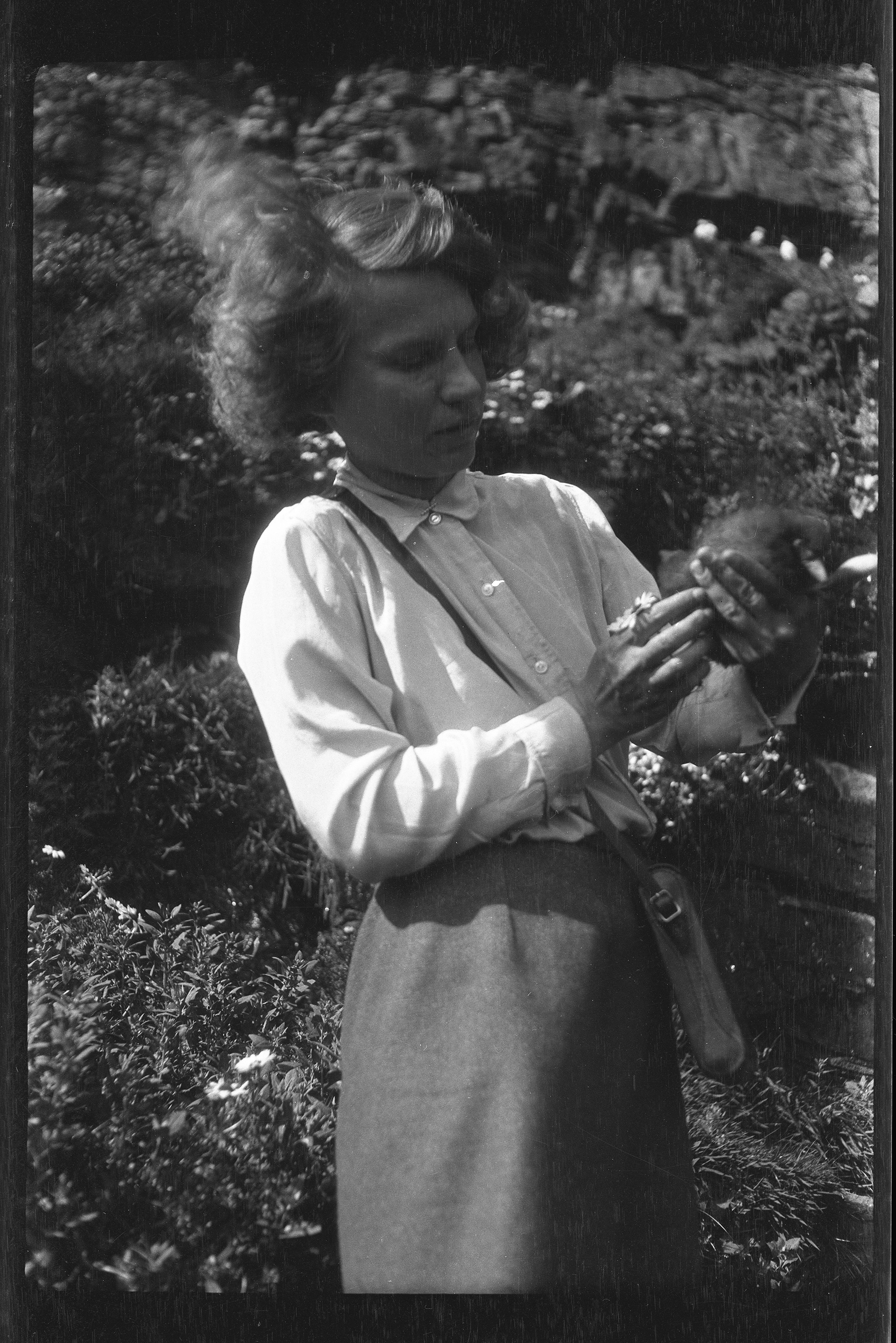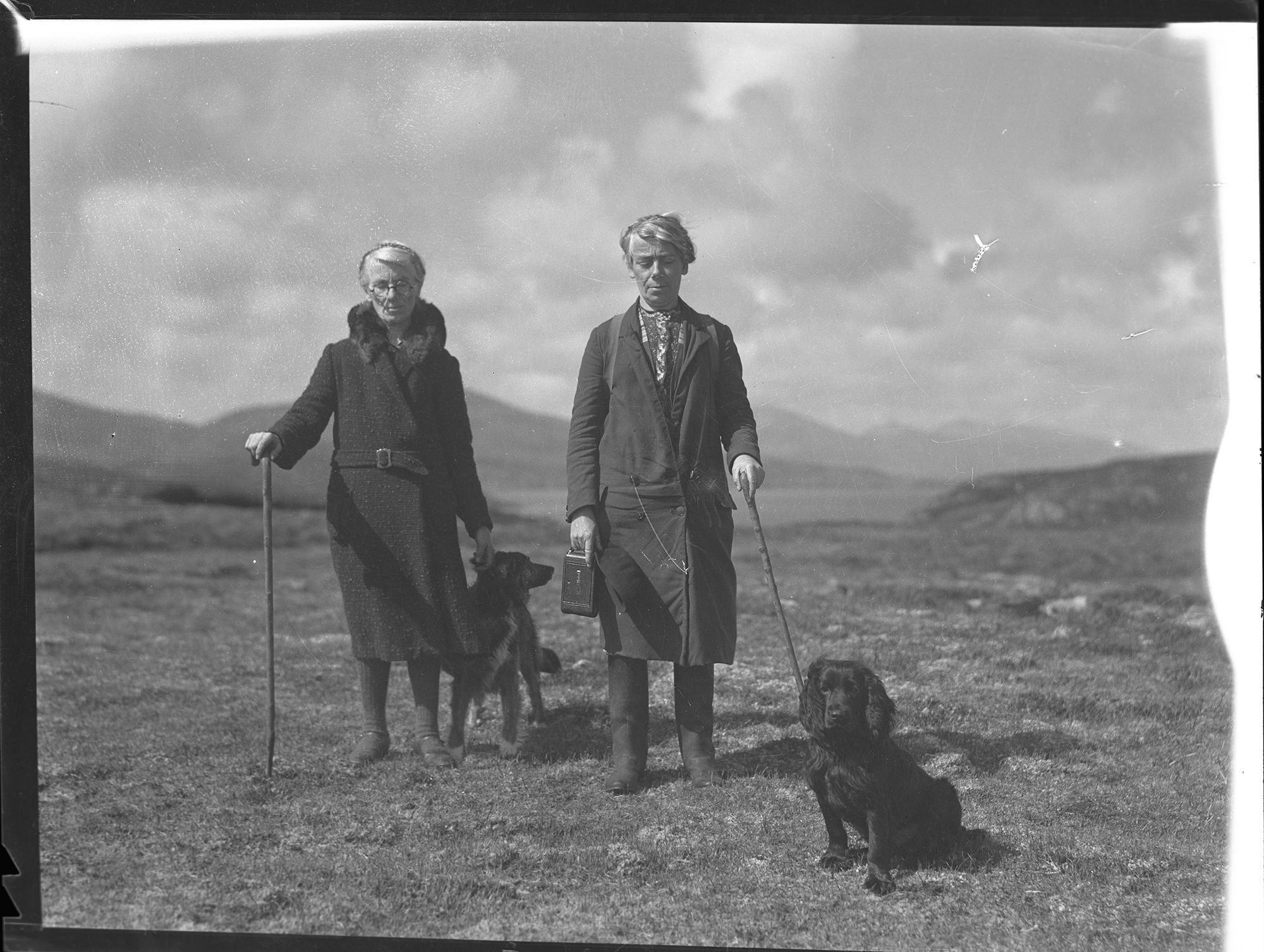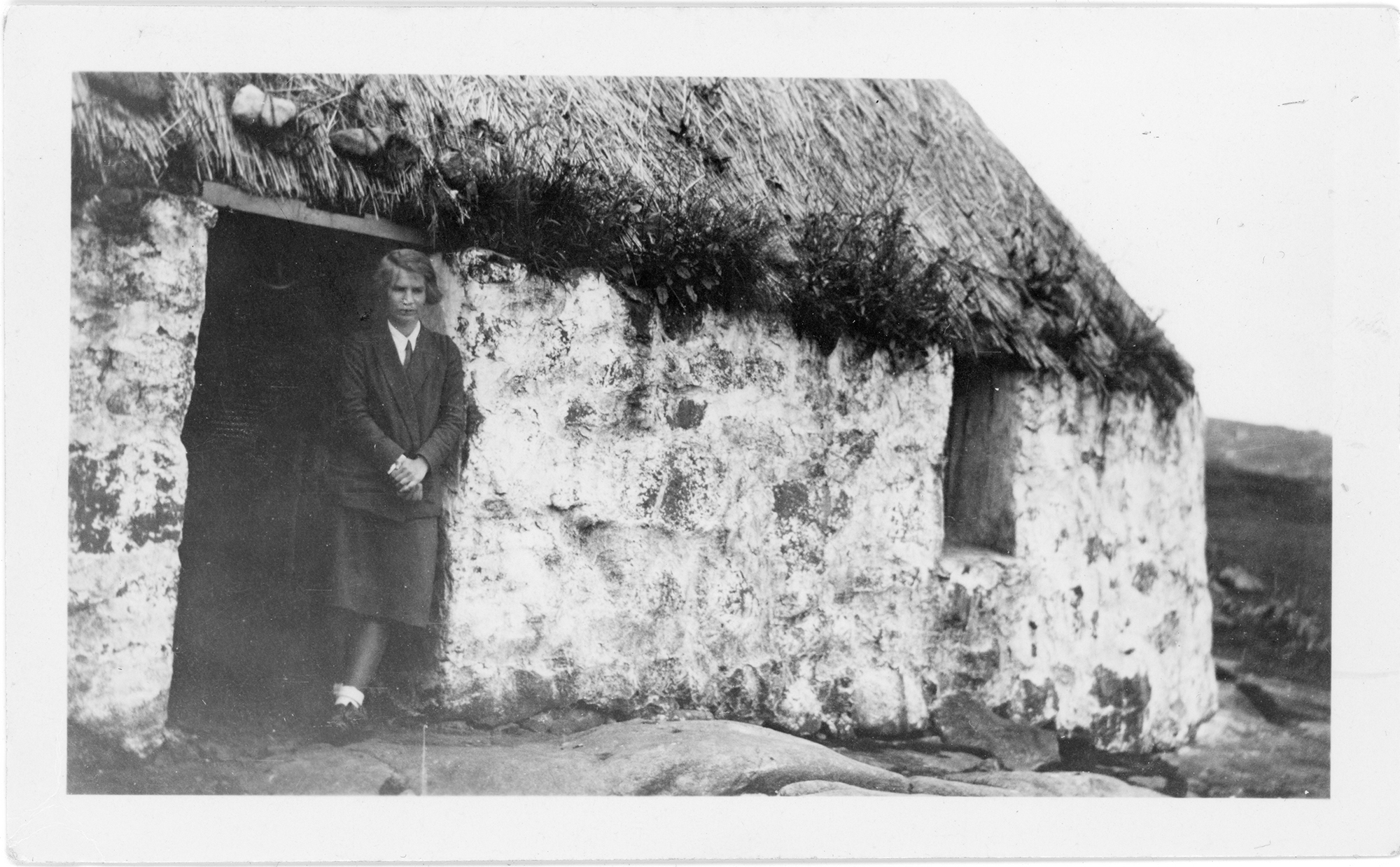The photographic archive of Margaret Fay Shaw

‘A little bird blown off course’ – Margaret on South Uist
Margaret’s path through life was a little unusual. Her decision to leave her society life in Pittsburgh and New York to cycle the west coast of Scotland, hear folksongs and learn Gaelic disconcerted her family, to say the least. The seed of this plan had been planted a few years earlier, when Margaret was at school in Helensburgh. There she first heard the Gaelic music of Scottish singer Marjory Kennedy Fraser (1857–1930). The 16-year-old Margaret was entranced and decided that she wanted to explore this aspect of Scottish culture further, to seek out the songs in their ‘pristine’ form and hear them as they sounded ‘when they were first heard’.
When Margaret cast her mind back over memories of this trip, there was only one place she wanted to go:
‘there was something about South Uist that just won me; it was like falling in love; it was the island that I wanted to go back to.’
So, in 1929, Margaret moved to Lochboisdale on South Uist and lived with the Campbell family. But she soon became dissatisfied as ‘there was too much English’. The island was just as beautiful, and the people just as welcoming, as she remembered – but this ‘wasn’t exactly what [she had] wanted’. The opportunity to immerse herself more fully in Gaelic culture came one night after dinner at Boisdale House. Her host, Donald Ferguson, encouraged his cousins
Màiri and Pèigi Anndra (Màiri and Pèigi MacRae) – two sisters who worked at the house – to sing for the guests after the meal. To Margaret ‘their songs were golden’; this was the treasure she’d been searching for.

Pèigi and Màiri Anndra (Pèigi and Màiri MacRae) walking their dogs on South Uist
Margaret asked the sisters if they would teach her their songs, and a week later she travelled to their small blackhouse in the village of North Glendale. Margaret described herself as a ‘little bird blown off course’ – and North Glendale was where she would make her first nest. By the end of the day, the MacRae sisters had agreed to take her in as a lodger. She would live with them for the next six years.

Margaret in the doorway of the MacRaes’ house.
It was on South Uist that Margaret met John Lorne Campbell, who would become her husband. In 1938, she and John moved to the Isle of Canna, where she would live for the rest of her life. While living on Canna she took photographs throughout the Hebrides, as well as travelling with John to meet and record Gaelic communities in Nova Scotia
Nonetheless, South Uist is where Margaret’s collections, both written and photographic, began. It seems only appropriate that the Morton digitisation project begins there too.
Read Part 2 to discover more about the digitisation project
The Morton Charitable Trust has been funding fieldwork on the National Trust for Scotland’s photographic collections since 2014. In 2018–19, this work will further raise the profile of the collections through research, articles, talks and dedicated projects. The project will also involve the digitisation of the Margaret Fay Shaw photographic archive of mid-20th-century Hebridean life, leading to an updated database with high-quality images.
Stay in touch
Be the first to hear about our latest news, get inspiration for great days out and learn about the work we do for the love of Scotland.